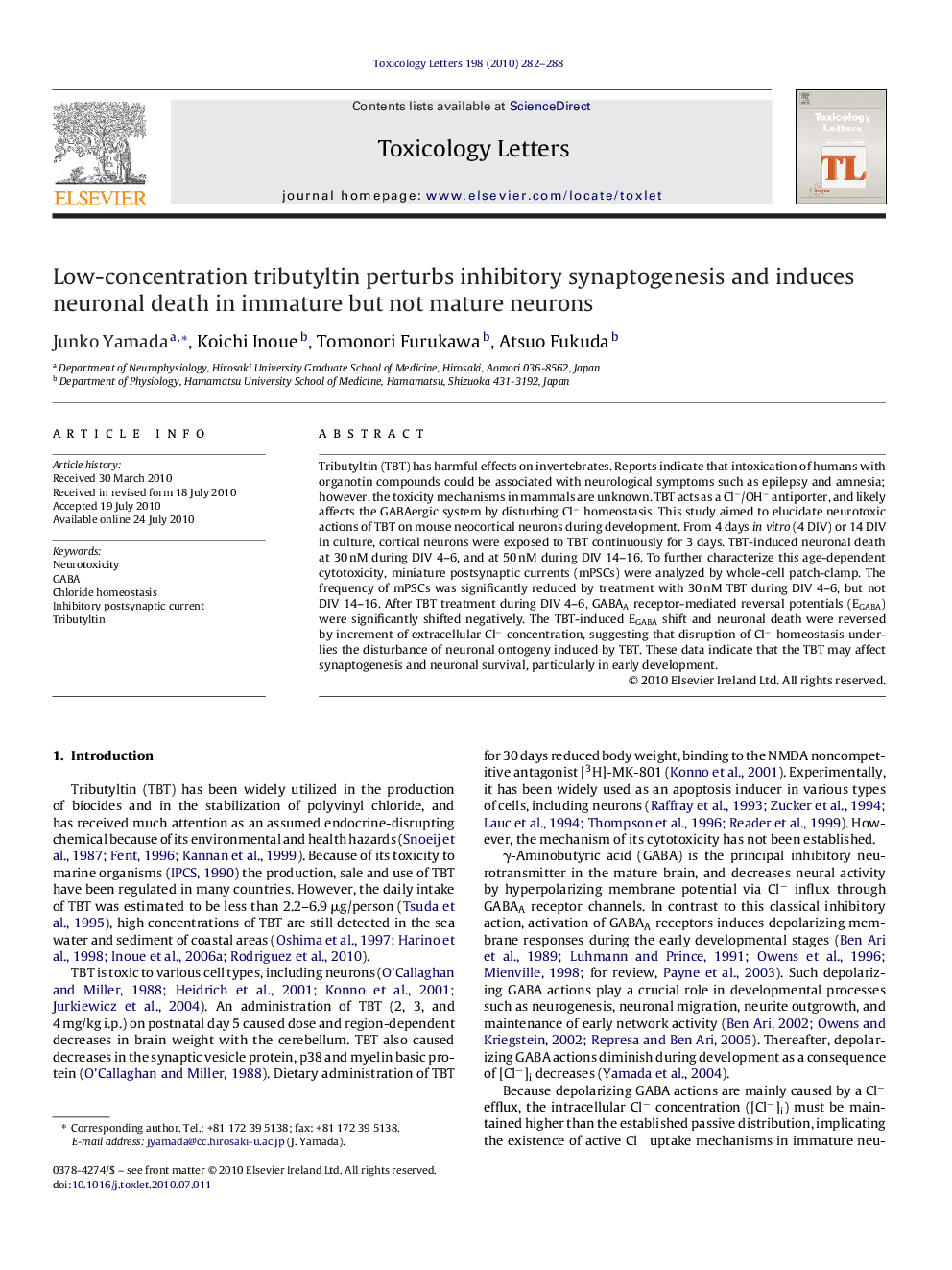| Article ID | Journal | Published Year | Pages | File Type |
|---|---|---|---|---|
| 2600624 | Toxicology Letters | 2010 | 7 Pages |
Tributyltin (TBT) has harmful effects on invertebrates. Reports indicate that intoxication of humans with organotin compounds could be associated with neurological symptoms such as epilepsy and amnesia; however, the toxicity mechanisms in mammals are unknown. TBT acts as a Cl−/OH− antiporter, and likely affects the GABAergic system by disturbing Cl− homeostasis. This study aimed to elucidate neurotoxic actions of TBT on mouse neocortical neurons during development. From 4 days in vitro (4 DIV) or 14 DIV in culture, cortical neurons were exposed to TBT continuously for 3 days. TBT-induced neuronal death at 30 nM during DIV 4–6, and at 50 nM during DIV 14–16. To further characterize this age-dependent cytotoxicity, miniature postsynaptic currents (mPSCs) were analyzed by whole-cell patch-clamp. The frequency of mPSCs was significantly reduced by treatment with 30 nM TBT during DIV 4–6, but not DIV 14–16. After TBT treatment during DIV 4–6, GABAA receptor-mediated reversal potentials (EGABA) were significantly shifted negatively. The TBT-induced EGABA shift and neuronal death were reversed by increment of extracellular Cl− concentration, suggesting that disruption of Cl− homeostasis underlies the disturbance of neuronal ontogeny induced by TBT. These data indicate that the TBT may affect synaptogenesis and neuronal survival, particularly in early development.
